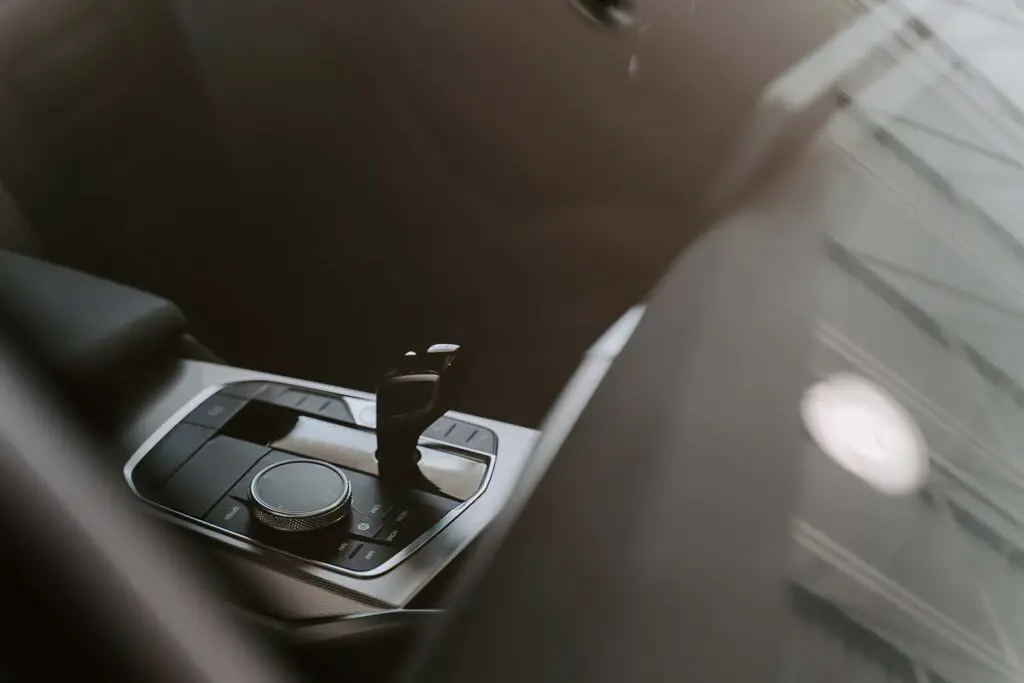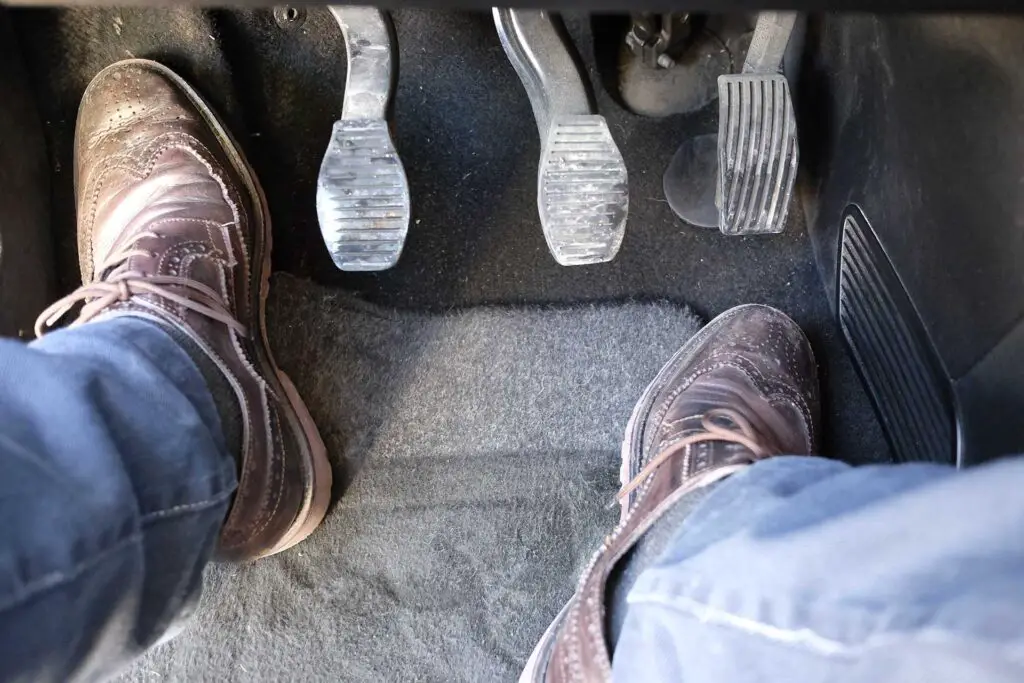Embarking on the journey of learning how to drive a manual car can be both exhilarating and daunting. Whether you’re a beginner or looking to enhance your driving techniques, this guide offers valuable insights and tips to navigate the road ahead easily and confidently.
How to Drive a Manual Transmission?
Driving a manual car involves mastering the coordination between the clutch, gear shifter, and accelerator. To begin, press the clutch pedal fully while turning the ignition. Once the engine starts, find the bite point of the clutch for a smooth start, and use the gear shifter to select the appropriate gear.
One of the manual transmission driving tips is to balance the clutch and accelerator during gear changes to maintain smooth transitions. Effective manual driving requires understanding how to control these elements in unison, adapting to various driving conditions, and ensuring a seamless driving experience.

Learn Your Four-Wheeler – A Tour of a Manual Gearbox
A manual gearbox, often viewed as the heart of a stick-shift car, requires a driver’s astute coordination and timing. By grasping the functionality of each gear and its role in the vehicle’s operation, drivers gain a deeper appreciation and control over their driving experience. This knowledge is not just about shifting gears. It’s about connecting with your vehicle, understanding its language, and harmoniously working together to achieve a smooth and efficient drive.
The Role of the Clutch – How It Works and Why It Matters
The clutch is a fundamental component in manual transmission vehicles, acting as the mediator between the engine and the gearbox. Its primary role is to engage and disengage the engine’s power to the gearbox while shifting gears, allowing for a smooth transition and preventing damage to the engine and transmission.

Preparation Steps for Your First Drive
Before you embark on your journey to master manual driving, it’s crucial to prepare adequately. This initial preparation sets the foundation for a safer and more comfortable driving experience. It involves a series of steps to ensure that you are physically and mentally ready to take control of a manual car.
These steps include adjusting your seating position and mirrors and familiarizing yourself with the car’s controls. Besides the physical comfort, it’s about ensuring optimal control and visibility, which are vital for effective driving.
Adjust the Seating and Mirrors for Optimal Control
Adjusting your seating and mirrors correctly is essential for safe and effective manual driving. Your seat should be positioned so that you can easily reach all controls, particularly the clutch pedal, which requires full engagement for smooth gear shifts.
You should be able to press the clutch pedal all the way down without stretching, ensuring precise control. Similarly, adjusting your mirrors is crucial for optimal visibility. Rear View and side mirrors should be positioned to give you a clear view of the road behind and beside you, minimizing blind spots. This adjustment is not just a safety measure. It enhances your confidence and control as you navigate different driving scenarios in a manual car.
Familiarize Yourself With the Pedals and Gear Shifter
Knowing the pedals and gear shifter of your four-wheeler is a fundamental step in driving a manual. Unlike automatic vehicles, manuals have three pedals:
- The clutch on the left,
- The brake in the middle,
- The accelerator on the right.
The gear shifter, typically located in the center console, is your primary tool for selecting gears. Spend time understanding its layout – usually a ‘H’ pattern in most vehicles. Practice shifting gears while the car is off to build muscle memory.

Start the Engine and Manage the Clutch
To initiate your journey in your four-wheeler, begin by engaging the clutch pedal fully and turning the ignition key. Once the engine roars to life, managing the clutch becomes your primary focus. This stage is where you learn the delicate dance of balancing the clutch and throttle to move the vehicle smoothly. Proper clutch control techniques and management will prevent stalling. Also, it will help you feel your car and how it responds to your inputs.
Find the Bite Point and Master the Clutch Control
The ‘bite point’ is the crucial moment where the clutch disc and the flywheel meet, allowing the transfer of power from the engine to the drivetrain. Locating this point is key to smooth starts and gear changes. As you slowly release the clutch pedal, pay attention to the slight change in engine noise and the gentle lift of the vehicle- this is your bite point.
Mastering clutch control involves understanding how to find and hold this bite point, especially in scenarios like starting on a hill or in heavy traffic. Achieving proficiency in this area not only enhances your driving experience but also contributes to the longevity of your car’s clutch system.

Shift Gears Like a Pro
Whether your car is fresh off the lot, pre-owned, or even holds a salvage title, numerous modifications can enhance various aspects of your reliable vehicle. For those with manual transmissions, a highly favored modification is a short shifter. However, when it comes to gear shifting in manual cars, you’ll have to learn the tactical approach of upshifting and downshifting.
The Art of Upshifting – Smooth and Efficient Gear Changes
Upshifting is an art that balances timing, engine speed, and smooth gear transition. The goal of upshifting is to shift to a higher gear at the appropriate engine RPM, ensuring that your vehicle accelerates smoothly and efficiently. This skill involves listening to your engine and understanding when it’s straining and needs to shift up. A smooth upshift is achieved by synchronizing the release of the accelerator and the engagement of the clutch, followed by a fluid movement of the gear shifter.
Downshifting Basics – When and How to Do It Right
Downshifting is an essential skill for reducing speed and increasing control, especially during deceleration or when approaching a stop. The key to downshifting correctly lies in timing and smoothness.
It involves lowering your gear in sync with the decrease in your vehicle’s speed, ensuring a seamless transition that maintains the engine in its efficient RPM range. Proper downshifting not only provides better control over your vehicle but also aids in brake preservation.

Check Out Advanced Manual Driving Techniques While Navigating the Road
Taking your manual driving skills to the next level involves learning to drive a stick shift with some mastering advanced techniques. That will allow you to navigate diverse and challenging road conditions with ease.
Manage Hills and Slopes – Hill Starts and Stops
Hill starts and stops are among the more challenging aspects of driving manuals. It’s because this requires precise coordination between the clutch, brake, and accelerator. When starting uphill, the key is to prevent the car from rolling backward while smoothly transitioning from the brake to the accelerator.
That’s why in manual car driving lessons, you learn how to find the bite point of the clutch at the right moment, a skill that ensures your vehicle moves forward without stalling or jerking. Similarly, when stopping on a slope, it’s important to use the brake and clutch effectively to avoid rolling.
Master Tight Turns and High-Speed Driving in a Manual
Navigating tight turns and driving at high speeds in a manual car demands a higher level of skill and awareness. It’s about understanding the right gear to be in, maintaining control through precise steering and clutch use, and knowing how to balance throttle input for smooth turns.
High-speed driving, on the other hand, requires an adept understanding of gear ratios and engine power, ensuring you’re always in the optimal gear for power and efficiency.

Explore Some of the Common Challenges and Solutions
Driving a manual car comes with its unique set of challenges, but understanding and overcoming these can significantly enhance your driving experience. Here are some common issues faced by manual car drivers, such as stalling and navigating heavy traffic.
Stalling – Why It Happens and How to Prevent It
Stalling is a common challenge for many learning to drive a manual four-wheeler. It typically occurs when the engine receives insufficient power to move the car, often due to improper use of the clutch and accelerator. Preventing stalling in manual vehicles involves balancing the clutch and accelerator, particularly when starting from a stop or during low-speed maneuvers.
Dealing With Heavy Traffic – Maintaining Control and Comfort
Navigating heavy traffic in a manual car requires patience, skill, and a good understanding of clutch control. Constant stopping and starting can be challenging, often leading to discomfort and fatigue. Effective traffic management involves mastering the art of inching forward and finding the right balance between the clutch and the accelerator to avoid stalling or jerking movements.
Parking, Especially on the Hill
Cars with manual transmissions lack a dedicated “park” gear found in automatics. Leaving your vehicle in neutral can lead to uncontrolled movement, especially when parked on a slope. It’s important to engage the handbrake consistently, but don’t depend solely on it to secure your car when parked.
When you park on an uphill gradient, turn off your engine while in neutral, then shift to first gear before applying the parking brake. Conversely, when parked downhill, follow the same steps but switch to reverse gear instead. This practice helps to prevent your car from rolling in the direction of the incline.
For added safety on steep slopes or extra precaution, consider using wheel chocks. These angled blocks, placed behind the wheels, provide additional security against any potential movement.
Maintenance Tips for Manual Transmission Vehicles
Manual gearbox maintenance is crucial for ensuring its longevity and performance. Unlike automatic vehicles, manual cars require a unique set of maintenance practices due to their distinct mechanical components.
Caring for Your Clutch – Best Practices for Longevity
The clutch is a vital component of any manual transmission vehicle, and its maintenance is key to the longevity of your car. Proper use and care of the clutch can significantly extend its life and improve your vehicle’s overall performance. This includes adopting good driving habits, such as avoiding riding the clutch and ensuring complete engagement and disengagement during gear shifts.
Routine Checks and Balances for Manual Cars
Regular maintenance checks involve more than just oil changes and tire rotations. They include inspecting the gearbox, monitoring transmission fluid levels, and ensuring that the clutch system is functioning properly.

Mastering the Art of Manual Driving – A Journey of Skill and Connection
Combining skill, patience, and a deep understanding of your vehicle surely helps driving manuals effortlessly. As you continue to practice and refine your skills, you’ll not only enjoy the unique engagement and control that manual driving offers but also develop a more intimate connection with the mechanics of driving. Embrace the challenge, enjoy the ride, and let the road be your teacher as you explore the fulfilling world of manual driving.








